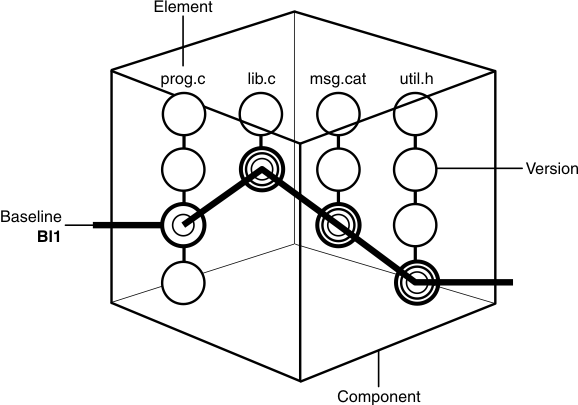About components and baselines
In the Unified Change Management (UCM) model, a baseline is an HCL VersionVault object that typically represents a stable source configuration for one or more components.
The project manager organizes HCL VersionVault elements into components. Usually, a component can be built into a functional unit of software. Multiple projects can use the same component. For the project responsible for maintaining the component, the project manager makes the component modifiable. For projects that might use that component to build other components, the project manager makes the same component read-only.
To keep track of different configurations of versions, your project manager or integrator creates a baseline, which records one version of each element in a component. In effect, a baseline is a version of a component.

A baseline identifies one version of every element visible in a component. Baseline definitions are stored in project VOBs (PVOBs). For more information about components, see the Help.
You can create a development stream or rebase an existing development stream from a baseline.
Recommended baselines
Usually, baselines go through a cycle of testing and bug fixing until they reach a satisfactory level of stability. When a baseline reaches this level, your project manager designates it as a recommended baseline.
When developers join the project, they populate their work areas with the versions of directory and file elements represented by the project recommended baselines. Alternatively, developers can join the project at a feature-specific development stream level, in which case they populate their work areas with the development stream recommended baselines. This practice ensures that all members of the project team start with the same set of files.